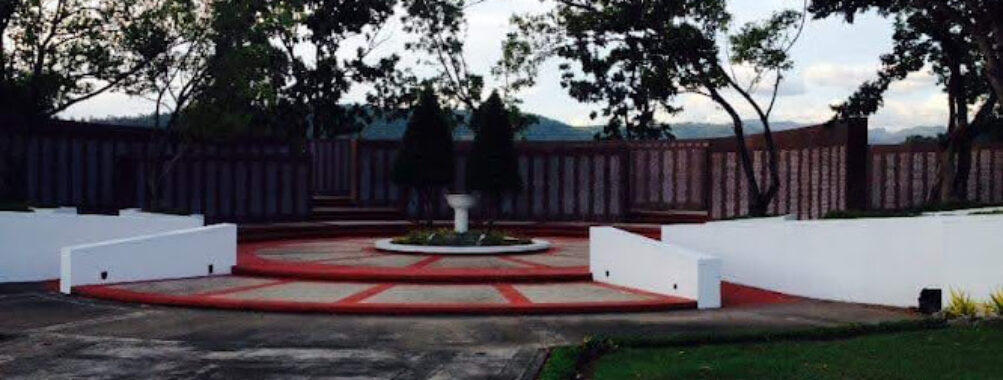
Volunteers Shrine
Table of Contents The Volunteers Shrine in Olongapo City, Philippines, is not just another park with neat lawns and pretty monuments—it’s a space that tells a story. It stands proudly as a tribute to the thousands of ordinary Filipinos who stepped up after the withdrawal of the US Navy from the Subic Bay Freeport Zone in the early 1990s. These locals transformed what could have been a city’s economic downfall into a symbol of resilience and rebirth. To me, it’s one of those places that ground you, the kind that makes you quietly realize how people working together can change the course of history. This shrine honors that chapter beautifully. At first glance, it may look like a serene park with clean, tree-lined paths, but spend a few minutes—no, really slow down—and you’ll feel the deeper pulse of the site. The central monument, a dove rising skyward, represents peace and freedom, while the plaques around tell of unity and volunteerism that revived the once-abandoned military base. You don’t need to be a history geek to appreciate it. Just being there, under the open Central Luzon sun, you feel a hopeful energy mixed with pride. What I personally find moving is how well-kept everything is. It’s clear the local government and the Subic Bay Metropolitan Authority value the memory it carries. The wide open area makes it ideal for a reflective walk, but families often come here too—kids running around while parents rest in shaded spots. Accessibility has been clearly prioritized. There’s a wheelchair-accessible entrance and designated parking, which says a lot about the city’s effort to make history inclusive to all visitors. The Volunteers Shrine sits close to other attractions within the Subic Bay Freeport Zone, so it’s quite easy to incorporate into your day’s itinerary. But even if you came only for this—honestly, you’d still leave with a deeper sense of the Filipino spirit. It’s a reminder that Olongapo City isn’t just about its beaches or nightlife; it’s also about resilience, leadership, and the simple power of people acting for the greater good. Now, if you ask the locals about the best time to visit, many would point to mornings. The air’s cooler then, the light softer, and you’ll likely catch a few joggers starting their day in the park. Late afternoons, around that peaceful golden hour before dusk, are also wonderful for photos and reflection. The central monument catches the warm sunset light, and it feels almost poetic. And if you’re the type who enjoys attending community events, November is worth noting—usually marking anniversaries of the Subic Bay volunteer efforts. The energy’s a bit more festive, though still anchored in remembrance and gratitude. Weather-wise, the climate in this part of Zambales can get quite hot around midday, especially from March to May, so it’s smart to plan your visit early or late in the day. Rainy months like July or August can make outdoor visits tricky, though the site’s durability and open layout mean it’s still manageable if you bring an umbrella. Personally, I prefer dry season visits—clear skies always make the monument look more majestic against the backdrop of Subic’s blue heavens. Heading to the Volunteers Shrine is simple enough, whether you’re coming from nearby towns or directly from Manila. If you’re driving, you’ll want to take the North Luzon Expressway (NLEX) and continue along the Subic–Clark–Tarlac Expressway (SCTEX), which leads straight to the Subic Bay Freeport Zone. Once inside, clear signage points you toward major landmarks, and you’ll spot directions for Rizal Highway where the shrine sits. Traffic moves fairly well in this area compared to other metro roads, so it’s a relaxed drive. For those not driving, buses from Manila or San Fernando head directly to Olongapo City. From the main terminal, you can hop on a local jeepney or use a ride-hailing service to reach the site. Depending on traffic, it can take around 3-4 hours from Manila, or much quicker if you’re already staying in Subic. Within the Freeport Zone itself, the area’s clean, organized streets make it quite pleasant for short walks, too. I’ve done it both ways—with a car and on foot—and truth be told, there’s something nice about walking there slowly, passing by the bay area and hearing the faint hum of the wind off the water. Here’s the thing about the Volunteers Shrine—it’s easy to think it’s just a small monument stop, but it’s better appreciated when you slow down. So if you’re planning a visit, keep these in mind: I still remember the first time I stumbled upon this site during an unplanned stop while driving through Olongapo years ago. I wasn’t expecting much—a friend had simply told me it was “a nice park.” But standing before the monument, seeing the words carved into stone, reading about how the community rebuilt after the US base withdrawal—I honestly felt a mix of humility and admiration. It reminded me that progress doesn’t always come from grand gestures. Sometimes it comes from dozens, hundreds, thousands of ordinary people freely giving their time and effort when their city needed them most. And if that’s not something worth honoring, I don’t know what is. Visiting the Volunteers Shrine isn’t just a sightseeing item to check off your list—it’s an emotional pause, a reflection on what community and unity can achieve. In a world where we’re often too busy chasing what’s next, this small yet powerful place in Olongapo City, Philippines, quietly invites you to remember what’s possible when people care enough to act together.Description
Key Features
Best Time to Visit
How to Get There
Tips for Visiting
Location
Places to Stay Near Volunteers Shrine
Find and Book a Tour
Explore More Travel Guides
No reviews found! Be the first to review!